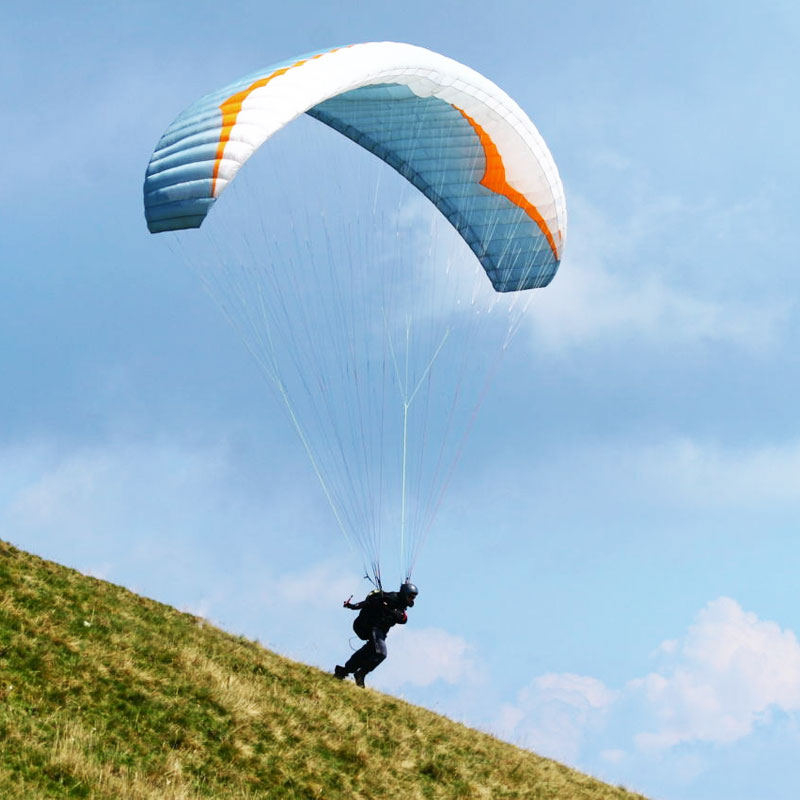Launching
As with all aircraft, launching and landing are done into wind. The wing is placed into an airstream, either by running or being pulled, or an existing wind. The wing moves up over the pilot into a position in which it can carry the passenger. The pilot is then lifted from the ground and, after a safety period, can sit down into his harness. Unlike skydivers, paragliders, like hang gliders, do not "jump" at any time during this process. There are two launching techniques used on higher ground[25] and one assisted launch technique used in flatland areas:

Forward Launch
In low winds, the wing is inflated with a forward launch, where the pilot runs forward with the wing behind so that the air pressure generated by the forward movement inflates the wing.
It is often easier, because the pilot only has to run forward, but the pilot cannot see his wing until it is above him, where he has to check it in a very short time for correct inflation and untangled lines before the launch.
Reverse Launch
In higher winds, a reverse launch is used, with the pilot facing the wing to bring it up into a flying position, then turning around under the wing and running to complete the launch.Reverse launches have a number of advantages over a forward launch. It is more straightforward to inspect the wing and check if the lines are free as it leaves the ground. In the presence of wind, the pilot can be tugged toward the wing, and facing the wing makes it easier to resist this force and safer in case the pilot slips (as opposed to being dragged backwards). However, the movement pattern is more complex than forward launch, and the pilot has to hold the brakes in a correct way and turn to the correct side so he does not tangle the lines. These launches are normally attempted with a reasonable wind speed, making the ground speed required to pressurise the wing much lower – the pilot is initially launching while walking forwards as opposed to running backward.

